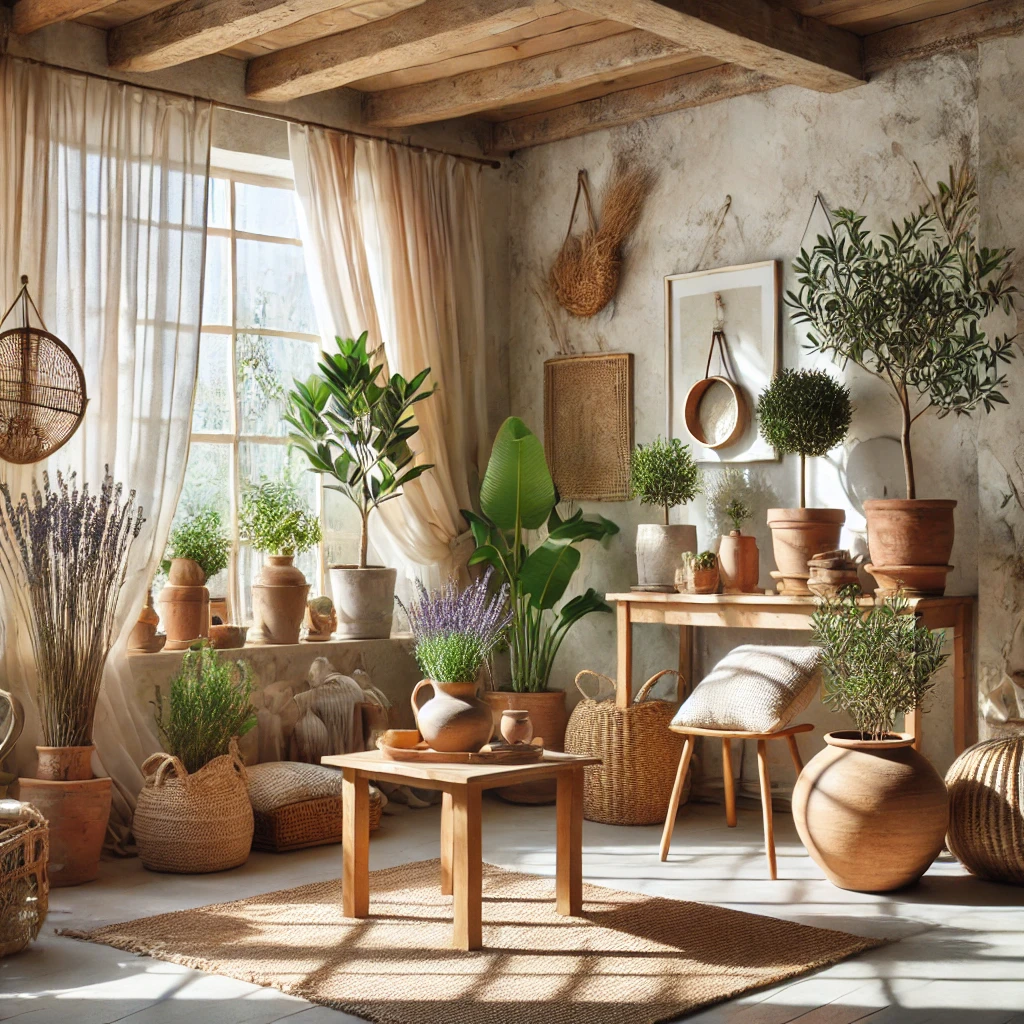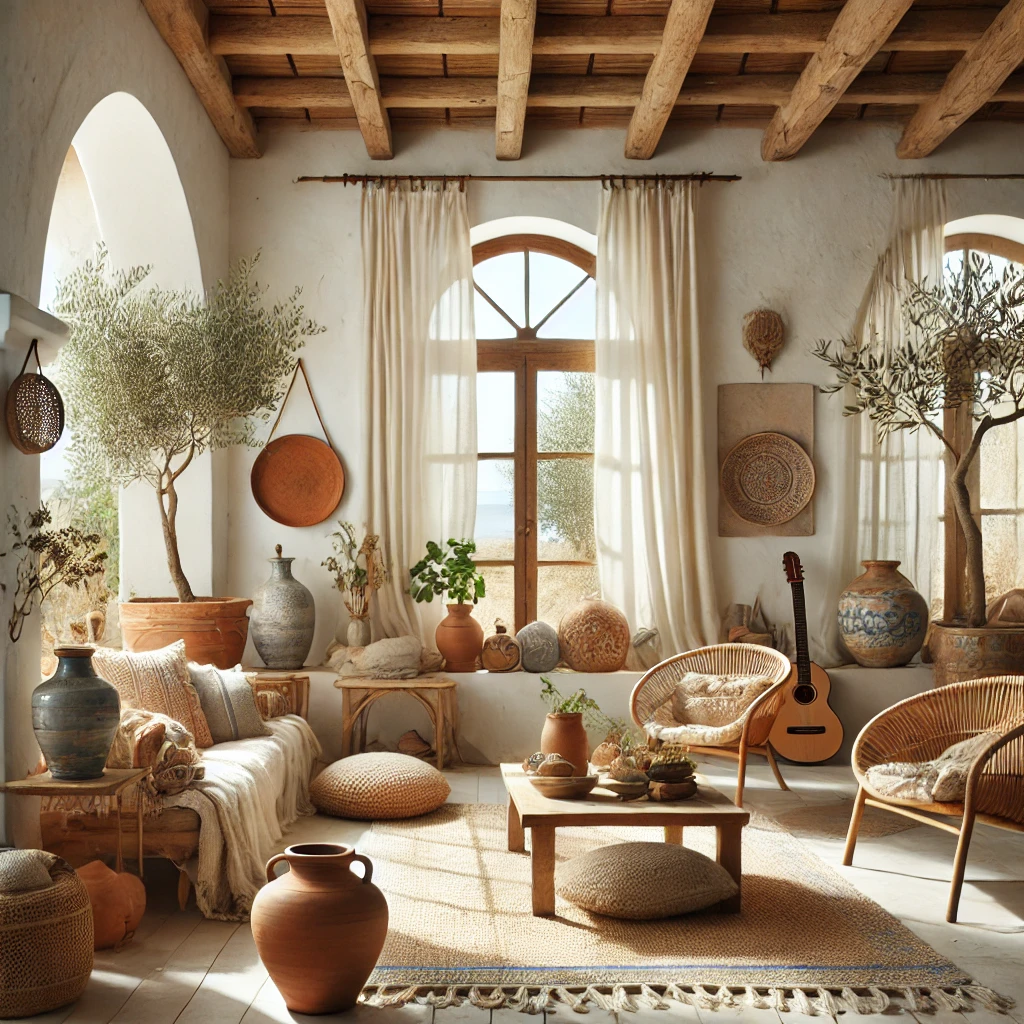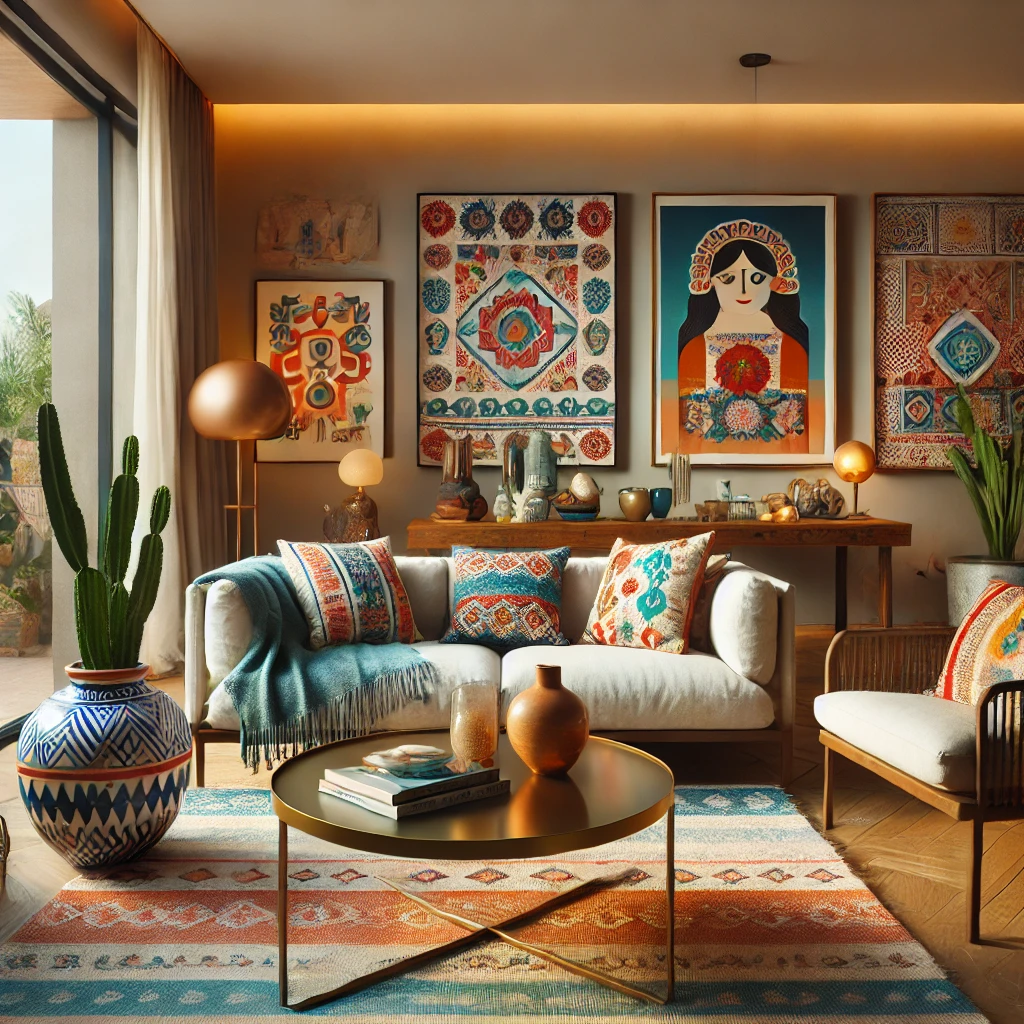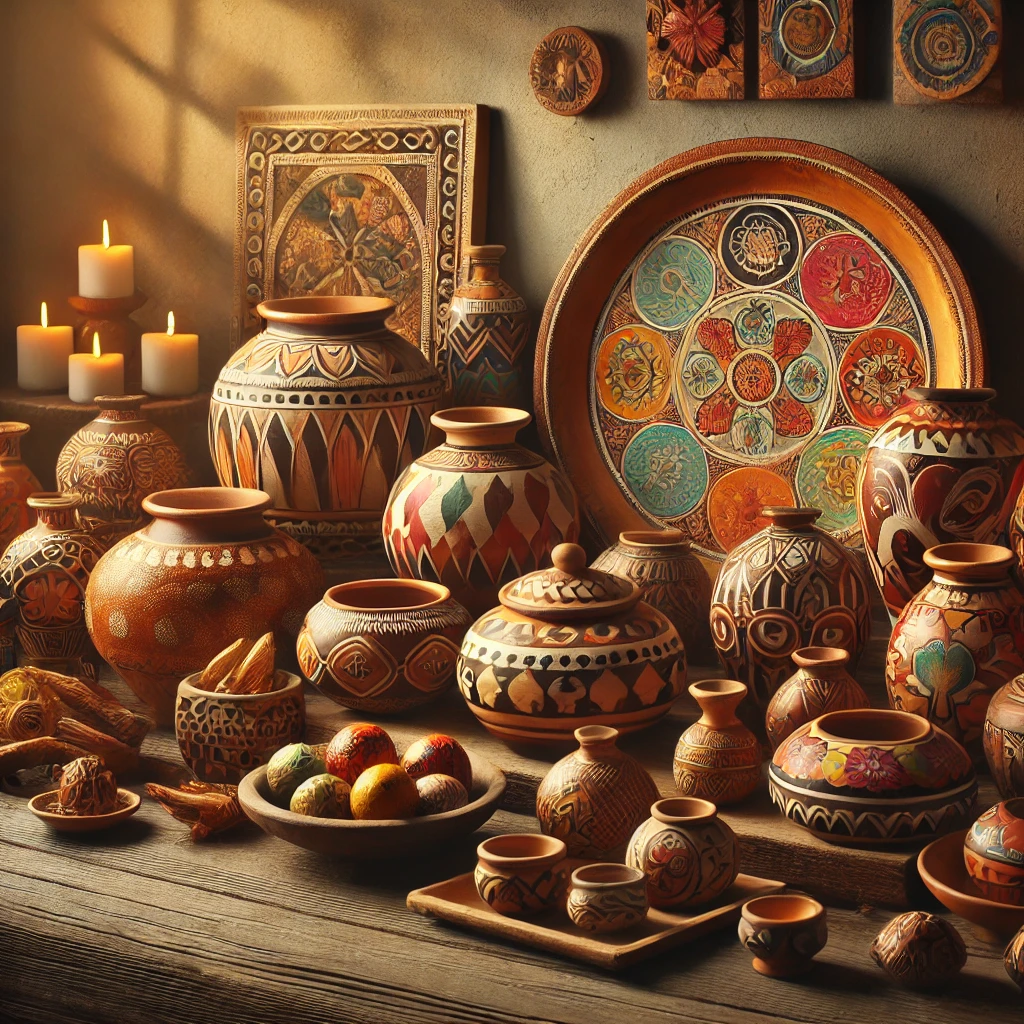Table of Contents
Understanding the Essence of Mediterranean Design
Mediterranean design is characterized by a harmonious blend of natural beauty, vibrant hues, and a seamless connection to outdoor spaces. This style draws inspiration from the coastal regions of Southern Europe, particularly Greece, Italy, and Spain, where the environment profoundly influences architecture and interior design. A core element of Mediterranean design is the use of natural materials, such as stone, wood, and clay, which not only evoke a sense of authenticity but also promote sustainability and durability in a home.
Vibrant colors play an essential role in achieving the Mediterranean aesthetic. Homes are typically adorned with warm, earthy tones like terracotta, along with rich blues and greens that echo the stunning landscapes surrounding the Mediterranean Sea. These colors can be found in decorative elements such as tiles, textiles, and wall treatments, infusing spaces with warmth and vitality. Patterns inspired by local flora and fauna, as well as mosaic-style designs, are often incorporated, adding depth and character to the overall look.

Another vital aspect of Mediterranean design is its emphasis on creating a strong relationship between indoor and outdoor spaces. Large windows and open-plan living areas allow natural light to flood the interiors, fostering a sense of openness and tranquility. Outdoor living spaces, such as terraces, courtyards, and gardens, serve as extensions of the home, encouraging relaxation and enjoyment of nature. By blurring the line between the inside and outside, this design style promotes a serene lifestyle, encouraging occupants to engage with their environment.
Ultimately, the essence of Mediterranean design lies in its ability to create cozy, inviting spaces that are both functional and beautiful. By embracing natural materials, vibrant colors, and an outdoor-centric approach, this style nurtures a sense of calm and decorum in everyday living, making it a wonderful choice for a serene home environment.
Key Elements of Mediterranean Decor
Mediterranean decor draws its inspiration from the beautiful coastal regions of Southern Europe, encompassing countries like Italy, Greece, and Spain. The hallmark of this style lies in its ability to create warm, inviting spaces that reflect the sun-soaked landscapes and rich cultural heritage of the Mediterranean basin. Among the key elements that define Mediterranean decor are terracotta tiles, stucco walls, arches, wrought iron accents, and wooden beams.
Terracotta tiles are one of the foundational features of Mediterranean aesthetics. These natural clay tiles often come in warm colors, contributing to the earthy, rustic appeal of the home. They are ideal for both indoor and outdoor spaces, providing durability while adding texture and warmth to floors. When paired with accents like intricate rugs or simple furnishings, terracotta can establish a harmonious balance between form and function.
Stucco walls further enhance the aesthetic by providing a smooth, textured finish that exemplifies Mediterranean architecture. This material not only helps regulate indoor temperature but also serves as a versatile backdrop that harmonizes with rich colors and beautiful artwork. Warm, earthy tones typical of stucco create a sense of continuity, evoking the feel of sunlit walls in Mediterranean villas.
The use of arches is another characteristic feature that adds elegance and fluidity to spaces, transcending the boundaries between different areas of the home. These sweeping architectural elements can be incorporated in doorways or windows, enhancing the spatial flow while reflecting traditional designs found in Mediterranean buildings.
Wrought iron is frequently used for railings, light fixtures, and furniture, contributing a timeless quality to the decor. The intricate designs and sturdy construction of wrought iron pieces serve to highlight the artistic craftsmanship typical of Mediterranean culture. Lastly, exposed wooden beams can create visual interest and warmth, forming a cozy ceiling framework that evokes a feeling of intimacy and comfort.
By blending these essential elements, homeowners can cultivate a serene and beautiful environment that captures the essence of Mediterranean living, ultimately fostering relaxation and comfort.
Color Palettes Inspired by the Mediterranean
The Mediterranean region is renowned for its captivating landscapes, sparkling waters, and sun-soaked climate, all of which influence its distinctive color palettes. When creating a Mediterranean-inspired home, it is essential to draw upon these natural hues to evoke a sense of tranquility and beauty. Earthy tones, ocean blues, and sunny yellows are prevalent in Mediterranean decor, fostering a warm and inviting atmosphere.
Earthy tones serve as a foundational element in Mediterranean design. These colors range from soft terracotta and sandy beige to rich ochre and muted browns, mirroring the natural elements found in coastal villages and ancient architecture. Incorporating these shades can create a balanced and harmonious environment, allowing other colors to shine without overwhelming the space. Consider using these hues on walls, furniture, or decorative accents to create a backdrop that reflects the region’s rustic charm.
Ocean blues are another defining characteristic of Mediterranean interiors, inspired by the countless coastlines that span the region. Shades of azure, teal, and deep navy can evoke a sense of calm reminiscent of the sea. These colors can be skillfully integrated through textiles, such as cushions and curtains, or through painted accent walls in living areas or bedrooms. When selecting ocean blues, aim for a range that complements the earthy tones to maintain spatial cohesion.
Lastly, sunny yellows infuse energy and brightness into any space. These warm tones can evoke feelings of joy, reminiscent of sun-drenched days along the Mediterranean coast. Consider using shades of lemon and golden yellows in artwork, pottery, or decorative pillows to add pops of color to the overall decor. Balancing sunny yellows with the cooler ocean blues and earthy tones will contribute to a well-rounded design, capturing the essence of Mediterranean living. By thoughtfully selecting and combining these color palettes, one can create a relaxed and beautiful home environment that resonates with the Mediterranean spirit.
Incorporating Natural Light and Open Spaces
One of the defining characteristics of Mediterranean design is its emphasis on natural light and open spaces. This architectural style thrives on creating an airy, inviting atmosphere, integrating both the interior and exterior of a home seamlessly. Proper window placement is crucial in achieving this effect. Large windows or glass doors not only flood the interiors with sunlight but also frame stunning views of the surrounding landscape, inviting the beauty of nature inside.
Incorporating wide, arched windows is a quintessential element of Mediterranean architecture; they enhance the airy feeling by expanding sightlines and allowing ample sunlight to illuminate living areas. Additionally, strategically positioning windows to optimize natural light exposure can significantly reduce reliance on artificial lighting, creating a more sustainable and energy-efficient environment.
The use of sheer curtains also plays a vital role in enhancing natural light while maintaining privacy. These lightweight fabrics can soften sunlight, creating a warm glow that enhances the overall ambiance. When selecting drapery, consider colors that reflect the serene palette often found in Mediterranean decor, such as whites, soft blues, and earthy tones. These choices not only contribute to an inviting atmosphere but also complement the aesthetic appeal of the home.
Another effective way to amplify the Mediterranean vibe is by fostering a seamless flow between indoor and outdoor spaces. Creating direct access to terraces, patios, or gardens encourages residents to engage with the outdoors, extending their living spaces. Using sliding doors or French doors can facilitate this connection, allowing fresh air and natural light to permeate throughout the home. Additionally, using consistent flooring materials inside and out can visually unify these spaces, enhancing the open feel that is characteristic of Mediterranean-inspired design.
Choosing Furniture that Reflects Mediterranean Style
When designing a Mediterranean-inspired home, the selection of furniture plays a pivotal role in achieving the desired aesthetic. The Mediterranean style, characterized by its warmth and natural beauty, calls for furniture that embodies rustic charm and timeless elegance. One of the hallmarks of this design approach is the use of rustic wooden tables, which serve as the centerpiece of dining areas. These sturdy pieces often feature distressed finishes or rich, warm tones, instantly evoking a sense of connection to the earth and the surrounding landscape.
In addition to wooden tables, seating options in a Mediterranean home should prioritize simplicity combined with elegance. Comfortable, yet stylish, pieces such as linen or cotton upholstered sofas create inviting spaces for relaxation. Opting for earth-toned fabrics can enhance the relaxed vibe, while textured cushions add an element of coziness. Furthermore, opting for low-profile seating options encourages an informal atmosphere, aligning perfectly with the Mediterranean lifestyle that values leisure and comfort.
Handmade pieces also play a significant role in establishing the authentic Mediterranean feel. Artisanal items, such as handcrafted pottery or woven textiles, can add unique character and a personal touch to your decor. By selecting furniture created by local artisans, one can support craftsmanship while ensuring that every piece is functional and durable. This not only enhances the overall design but also infuses the home with an authentic Mediterranean spirit, telling a story of the region’s cultural richness.
When curating furniture for a Mediterranean-inspired home, focus on items that balance durability and functionality. Each piece chosen should reflect the tranquility and elegance that a Mediterranean environment embodies. Whether it’s a rustic farmhouse table, comfortable seating, or one-of-a-kind handmade decor, the right furniture choices will ultimately create a harmonious and inviting atmosphere.
Bringing the Outdoors In: Landscaping Ideas
The Mediterranean lifestyle is often characterized by its strong connection to nature, vibrant colors, and calming atmospheres. When considering landscaping ideas that align with this theme, a few striking elements come to mind—terraced gardens, herb pots, and citrus trees. Each of these features not only enhances outdoor spaces but also serves as a bridge to create a seamless flow between indoor and outdoor living.
Terraced gardens are a hallmark of Mediterranean design, particularly due to their ability to maximize space and incorporate varying elevations. These gardens can be cultivated with a variety of drought-resistant plants, such as lavender, rosemary, and succulents, which thrive in the warm climate typical of Mediterranean regions. Utilizing natural stone or tiled pathways to connect terraces will add to the rustic charm, creating an inviting entryway to your living area. Additionally, these gardens can easily be incorporated into the interior aesthetic of your home, with large windows or glass doors that open to provide views of the lush scenery.
Herb pots are another vital element for achieving a Mediterranean-inspired atmosphere. Consider placing terracotta pots filled with aromatic herbs like basil, thyme, and oregano on windowsills or outdoor countertops. This not only brings delightful fragrances into the home but also offers the practicality of having fresh ingredients on hand for culinary pursuits. Integrating these pots into your kitchen or dining areas maintains the connection between the space and the vibrant outdoor life.
Lastly, the incorporation of citrus trees adds a pop of color and texture to any landscape. Dwarf lemon or orange trees are particularly well-suited for patios or balconies, and their bright foliage can invigorate an area, infusing it with a sense of vitality. Positioning these trees where they can be viewed from inside the home enhances the overall aesthetic, encouraging an appreciation of nature from the comfort of your living space.
Accessories and Decor: Finishing Touches
Accessories and decor play a pivotal role in establishing the unique ambience of a Mediterranean-inspired home. The thoughtful integration of decorative elements—such as ceramic pottery, vibrant textiles, and culturally-relevant artwork—can significantly enhance the overall aesthetic while maintaining a sense of tranquility. Embracing these finishing touches allows homeowners to infuse their spaces with the charm and warmth intrinsic to Mediterranean culture.
Ceramic pottery serves as a foundational element in this decor approach, often featuring intricate designs and rich colors. These handcrafted pieces can be used as statement decor items or practical storage solutions. From large urns to delicate bowls, ceramic pottery encapsulates the artistry of the Mediterranean, providing both functionality and visual interest. Placing such pieces on shelves or coffee tables invites casual conversations while showcasing craftsmanship.
Vibrant textiles also play a crucial role in creating a Mediterranean atmosphere. Fabrics displaying bold patterns, rich hues, and soft textures can be incorporated through cushions, throw pillows, and area rugs. These textiles not only add color but also evoke a sense of comfort and relaxation. Designing layered fabric arrangements can help to soften the overall aesthetic and create inviting seating areas conducive to conversation and relaxation.
Another thoughtful accessory choice is artwork that reflects the Mediterranean culture and landscape. This can include paintings, prints, or photographs depicting serene seascapes, sunlit villages, or traditional festivals. These art pieces create focal points in a room, inviting admiration and sparking curiosity about the stories behind them. Selecting pieces that resonate personally can lead to a cohesive environment that reflects the homeowner’s personality.
In crafting a Mediterranean-inspired home, the key lies in striking a balance between accessorizing and maintaining a sense of space. By carefully selecting accessories and decor that resonate with Mediterranean heritage, one can create an inviting and serene atmosphere that enhances the beauty of everyday living.
Creating Cozy Outdoor Living Spaces
Designing outdoor living spaces that reflect the relaxed Mediterranean lifestyle can significantly enhance the experience of your home. The essence of this style lies in creating inviting environments that allow for socialization and leisure. A well-planned outdoor area incorporates cozy seating arrangements, functional dining spaces, and shaded spots that facilitate enjoyment of the warm weather.
To start, consider your seating arrangements. Opt for comfortable furniture made of natural materials such as rattan or teak, which evoke a rustic charm that is inherent in Mediterranean design. Arrange seating in conversational clusters to encourage interaction among guests. Throw pillows and woven blankets in earthy tones can add warmth and comfort, while outdoor rugs can help define spaces and enhance the cozy atmosphere. Moreover, utilizing a fire pit surrounded by seating can offer an inviting focal point for gatherings, especially during cooler evenings.
Dedicating an area for dining is integral for outdoor living spaces. A sturdy wooden or stone dining table, surrounded by adequate seating, can create the perfect backdrop for al fresco meals. Consider adding a pergola or trellis adorned with climbing plants, which can provide shade while integrating natural beauty. Lighting arrangements, such as string lights or lanterns, can transform the dining experience into a magical evening affair, boosting the overall ambiance.
It is equally important to include shaded spots to escape the sun while still enjoying the outdoors. Umbrellas, canopies, or shade sails not only provide comfort but enhance the visual appeal of the space. Incorporating natural elements such as potted plants or a small herb garden can further create an inviting atmosphere while reinforcing the Mediterranean connection to nature.
By thoughtfully designing cozy outdoor living spaces, you can replicate the charm of the Mediterranean lifestyle, making your home a relaxed and enjoyable sanctuary.
Maintenance Tips for a Mediterranean Home
Owning a Mediterranean-inspired home offers a blend of elegance and comfort, but maintaining this aesthetic requires thoughtful care. One of the central features of Mediterranean design is the use of natural materials, such as terracotta tiles, stone, and wood. Regular maintenance of these materials is essential to ensure their longevity and vibrancy. For instance, terracotta tiles should be regularly swept and occasionally mopped with a mild detergent, while porous surfaces must be sealed appropriately to prevent staining and deterioration. It is advisable to inspect these surfaces for cracks or wear, allowing homeowners to tackle repairs swiftly before they escalate.
Color vibrancy plays a crucial role in the overall appeal of a Mediterranean home. Sun exposure can fade colors over time, especially in outdoor spaces. Utilizing UV-resistant sealants for painted surfaces and fabrics can substantially mitigate this issue. Additionally, regular cleaning of outdoor furniture and cushions can help maintain their aesthetic allure. Fading can also occur on interior walls, so selecting quality paints with UV protection will retain the stylish hues characteristic of Mediterranean décor.

Outdoor spaces, which are pivotal to the Mediterranean lifestyle, require special attention as well. Regular pruning of plants and trees not only enhances their health but also prevents overgrowth that may tarnish the beauty of the home. It is also essential to monitor irrigation systems since Mediterranean climates typically emphasize drought-resistant landscaping. Homeowners should adopt a routine for landscaping, including mulching and fertilizing to maintain soil health, supporting the lush greenery that characterizes this design style.
By following these maintenance tips, homeowners can effectively preserve the beauty and functionality of their Mediterranean oasis, ensuring it remains a tranquil and inviting space throughout the year.





